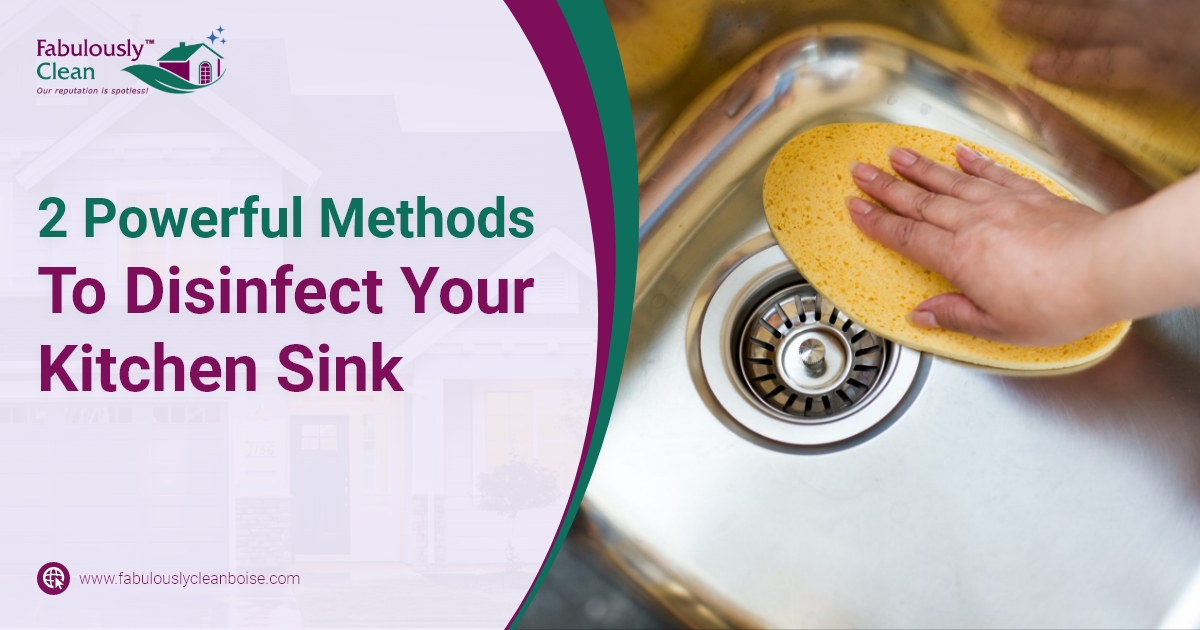Are you one of those people who believes that a quick rinse with dish soap and hot water is enough to sanitize your kitchen sink? Think again! The truth is that your sink is probably teeming with bacteria that can contribute to foodborne illness and other health problems. But don’t worry, our expert home cleaners have got your back in this guide! In this article, we’ll share with you two powerful methods that are not only effective at killing germs but also easy and affordable.
If you’re not sure if you’re cleaning your kitchen sink as thoroughly as you should, this is the right blog post for you! Here’s how to disinfect it even after handling germy food like raw meat.
Method #1: Use bleach to disinfect your kitchen sink
Some people are on the fence about using harsh chemicals like bleach. However, if you add water, it becomes a safer solution guaranteed to kill germs and viruses. Just don’t forget to wear gloves and open your windows while disinfecting.
Make this bleach solution by adding one tablespoon of bleach to one gallon of water. Disinfecting is as easy as spraying the solution, scrubbing the sink’s surface with a damp sponge, rinsing, and letting your sink dry. Now you’re ready for your next cooking session.
Method #2: Spray vinegar and hydrogen peroxide
Although it’s safe to use bleach (with proper handling) to disinfect surfaces, some people aren’t comfortable with harsh chemicals; this is when green sanitizers come in handy.
Vinegar and peroxide might not be as strong as bleach, but they are gentler to your family and some surfaces. Even applying just one of these safe products will remove some germs, but you’ll have better results if you use one after the other.
To prepare your solutions, pour the contents of a 3% hydrogen peroxide container inside a dark spray bottle and a 1:1 white vinegar and water mix inside another container. Keep in mind that you shouldn’t mix them in the same bottle.
To disinfect the sink, spray one solution all over the surfaces, wait until it dries, and apply the other spray afterward.
Extra: Don’t forget your cabinets and kitchenware!
Even if you were very careful and made no mess while cooking, you should clean the surrounding areas anyway, such as countertops and cabinets. Clean those surfaces with water and dish soap right after cooking to avoid hard residue and future buildup.
If you handled raw food on your countertops or any other surface, you could disinfect it using method #2, but don’t use bleach!
However, make sure vinegar and hydrogen peroxide are safe for your countertops; some materials like granite and marble won’t react so well to these disinfectants. Always spot-test first!
Prevention tips for a germ-free kitchen
Here are some things to keep in mind next time you’re fixing meals:
Tip #1: Don’t wash meat or poultry
Washing food spreads germs over the sink and can carry over kitchenware. You’re safe as long as the meal is well cooked.
Tip #2: Have a separate cutting board
Avoid cross-contamination from slicing and dicing your raw proteins by having a separate cutting board.
Tip #3: Avoid using the same washcloth
When washing your hands, it’s a good idea to dry them with paper towels instead of reusing a wet washcloth.
Hire the best cleaning services in Idaho
Sometimes, you can’t clean your home as deeply as you want. Maybe it’s the lack of time, or you just need a break from housework.
Whatever it is, you can always trust Fabulously Clean to do the chores for you! Our skilled professionals can clean your home from top to bottom and disinfect the high-touch points for your household safety.

